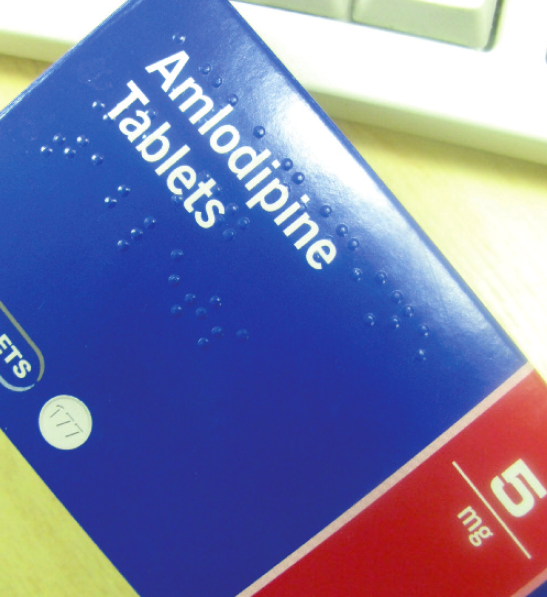
This content was published in 2012. We do not recommend that you take any clinical decisions based on this information without first ensuring you have checked the latest guidance.
Calcium channel blockers are a well established class of medicines for treatment of hypertension and prevention of angina. The dihydropyridine calcium channel blockers, a group that includes amlodipine, felodipine and lacidipine, are a common choice for treatment of hypertension. Amlodipine, which is both low cost and taken once daily, is the one of the most commonly prescribed agents.
Diltiazem and particularly verapamil have properties that differ from those of the dihydropyridine calcium channel blockers.
The 2011 National Institute for Health and Clinical Excellence guideline on hypertension advises that calcium channel blockers should be first-line treatment for people aged over 55 years and for black people of African or Caribbean family origin of any age. NICE also recommends that non-proprietary drugs are prescribed and that a once daily dosage is preferable. Calcium channel blockers are also given to younger hypertensive patients where blood pressure is not sufficiently reduced by an angiotensin-converting enzyme inhibitor or angiotensin receptor blocker alone.
Some patients will be starting on calcium channel blockers to manage angina, which is an indication that does not come under the new medicine service in England. If you are not sure why the calcium channel blocker is being prescribed, ask the patient —those with angina are likely to be well aware of the symptoms they suffer and may also have prn nitrates prescribed.
Explain why treatment is needed
Dihydropyridine calcium channel blockers relax vascular smooth muscle, dilating blood vessels and consequently reducing peripheral resistance. As with other antihypertensives, calcium channel blockers are generally a lifelong treatment and this may be a difficult issue for some patients. Finding out patients’ views and feelings about both taking the medicines and important lifestyle aspects (eg diet, exercise, etc) will help predict outcomes.
Clear on what to do?
Calcium channel blockers are usually taken once or twice a day, and some have modified release formulations to achieve this. Amlodipine is unaffected by food so can be taken at any time but some calcium channel blockers are reported to be affected by food. Notably, it has been reported that the bioavailability of lercanidipine can increase four fold when taken two hours after a high fat meal. The manufacturers advise that lercanidipine should be taken at least 15 minutes before breakfast. Regular blood pressure checks are needed to find out whether the treatment is working. Target clinic blood pressures are below 140/90 mmHg for people under 80 years with treated hypertension and below 150/90 mmHg in those aged 80 years or more with treated hypertension. Targets are slightly lower for each age group, if measuring blood pressure at home or over longer periods — below 135/85 or 145/85 mmHg, respectively.
Side effects and interactions
The most common side effect with calcium channel blockers is ankle swelling, which affects about one in 10 people. This effect may improve with time and simple measures such as elevating the leg when sitting or using compression stockings. However, for some it will be problematic and require a change of therapy.
UK Medicines Information recently summarised strategies to treat ankle oedema caused by calcium channel blockers (Clinical Pharmacist 2011;3:308). Reducing the dose of the calcium channel blocker or adding an ACE inhibitor or ARB can help. Note that diuretics are not effective for calcium channel blocker-induced ankle oedema because the oedema is due to capillary pressure changes and leakage, not water retention. Other common side effects that affect more than 1 per cent of patients include headache, dizziness, tiredness, awareness of heart beat (palpitations) and flushing. These tend to be most noticeable at the start of treatment, but if the patient is able to tolerate the side effects they may become less troublesome after a week or so. Abdominal pain and nausea are also common. Long-acting calcium channel blockers are less likely to cause marked postural hypotension than some other hypotensive agents (eg, ACE inhibitors).
Some calcium channel blockers are affected by grapefruit juice — it is advised that patients on felodipine or lercanidipine do not consume grapefruit or grapefruit juice. Although with amlodipine any increased bioavailability caused by grapefruit appears to be minimal, there have been isolated reports of problems and some manufacturers still warn against grapefruit or grapefruit juice consumption.
As with the other main agents used to treat hypertension (eg, diuretics, ACE inhibitors and ARBs), the drug interactions listed in standard texts, such as the BNF, are extensive.
Erythromycin is known to increase the bioavailability of felodipine substantially. A few interactions between other calcium channel blockers and macrolides have also been reported so manufacturers may advise against these combinations.
Azole antifungals can increase the levels of calcium channel blockers, resulting in greater adverse effects, so are best avoided if possible.
St John’s Wort is reported to reduce the bioavailability of some calcium channel blockers, but since this effect is due to induction of a cytochrome p450 enzyme relevant to the metabolism of all calcium channel blockers, it could affect the whole drug group. Either avoid the combination or ensure that extra blood pressure checks are in place.
Quick reference
The Panel suggests counselling points for supplying amlodipine. This list is not intended to be comprehensive but to cover some important issues.
Panel: Advice to patients
Amlodipine for hypertension
- Having high blood pressure increases the risk of having a heart attack or stroke. Amlodipine acts to reduce blood pressure and so reduces this risk.
- The tablets are best taken regularly, once each day with a glass of water. Choose a time of day which is easy for you to remember.
- All medicines can have some unwanted effects. Amlodipine can cause ankle swelling, but resting your feet on a stool when you sit down may help with this. Other occasional problems include flushing, headache and dizziness. If you keep taking the tablets these effects may go away within a week or so, but if any side effects are persistent or troublesome tell your doctor.


